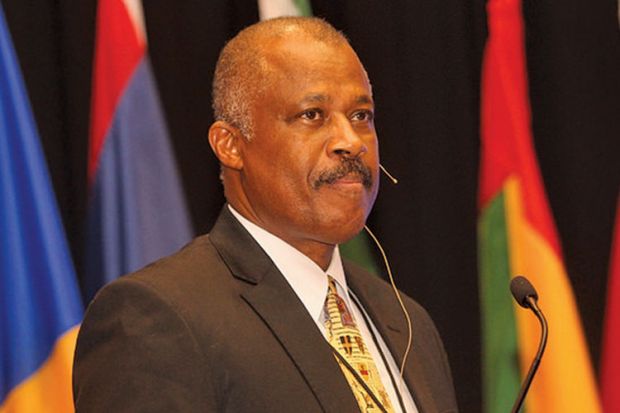As higher education jobs go, leading an institution spread across the Caribbean islands of Jamaica, Barbados and Trinidad sounds like a dream opportunity.
But as the newly appointed vice-chancellor of the University of the West Indies knows full well, it doesn’t come without its challenges.
During his inaugural address as leader on 1 May, after 36 years in various roles at the university, Sir Hilary Beckles announced that one of his main goals was to re- establish the institution as one integrated university.
“Our UWI must more than ever function and operate as one; not four separate universities but one indivisible academy. To this restoration of the singularity of our university, my colleagues and I are committed,” he said.
Speaking to Times Higher Education, Sir Hilary said that by making each campus as “responsive as possible to its immediate environment”, the university “might have gone too far in giving [them] too much autonomy. We might have to do some rebalancing.”
He sums up the challenge by reciting a “mischievous joke” told by Eric Williams, the former prime minister of Trinidad and Tobago, following the country’s withdrawal from the West Indies Federation.
“He said: ‘What God has put asunder, let no man put together.’ So in some ways we are fighting God, but we will put [the university] together.”
UWI was established in 1948 as a college of the University of London and started out with one campus, Mona, in Jamaica. Fifteen years later, the university gained independent degree-granting powers as the “winds of change” blew through the region.
Two more campuses were built: St Augustine in Trinidad and Tobago and Cave Hill in Barbados.
Democratic vision
Historically, each campus specialised in a different subject – originally medicine, engineering or law – but all three now offer a wide range of courses.
“As the economies of the region went deeper into recession, students found it difficult to pay for travel and housing costs away from home,” Sir Hilary said.
“Our vision is no matter where you are in the Caribbean, the UWI is on your doorstep. We want to give every citizen democratic and equal access.”
Around 90 per cent of students at the Mona and St Augustine campuses are residents of their parent islands, while the figure is around 70 per cent at Cave Hill.
However, despite the university’s regional focus, Sir Hilary said the Caribbean had the lowest percentage of citizens enrolled in higher education in the Western hemisphere, while the English-speaking islands have the lowest enrolment rates within the Caribbean.
“This is disturbing, especially when we recognise that a country’s potential for sustainable economic development is linked directly to the number of citizens who have been in higher education,” he said.
“So we’ve grown the university considerably in the past 10 to 15 years. You can very well imagine the economic environment is not very conducive to that.”
Growth strategies
It is this growth that in 2008 led to the launch of the university’s Open Campus, which now has nearly 50 learning centres scattered across 17 countries in the English-speaking Caribbean.
Sir Hilary’s main area of focus is to double the number of students enrolling in science and technology courses to about 40 per cent of the total population. This will, in part, involve encouraging more men to enrol for degree study. The university’s student cohort is presently 70 per cent women.
Another major part of the university’s growth strategy is to “globalise in a much more aggressive fashion” by increasing its international student cohort to 20 per cent from its current 10 per cent.
Sir Hilary said it will develop a science and technology centre in China in collaboration with an existing institution; create joint colleges in parts of North America where there are large Caribbean communities; and collaborate with “one or two British universities” on a course in Caribbean studies. These will be forged by building partnerships rather than branch campuses.
He admitted that although the university had not previously created the kind of international collaborations now common among leading higher education institutions across the world, globalisation was certainly not a new concept for UWI or the Caribbean.
“I can think of no other part of the world with as deep a global penetration of the economy as the Caribbean,” Sir Hilary, a historian by training, said.
“Five hundred years ago, Columbus arrived here and that brought Europe, Africa and later Asia into the Caribbean. So historically you can say the Caribbean is the world’s first global community. We were built that way and we can capitalise on that.”
POSTSCRIPT:
Article originally published as: Caribbean v-c’s singular vision at home and abroad (9 July 2015)
Register to continue
Why register?
- Registration is free and only takes a moment
- Once registered, you can read 3 articles a month
- Sign up for our newsletter
Subscribe
Or subscribe for unlimited access to:
- Unlimited access to news, views, insights & reviews
- Digital editions
- Digital access to THE’s university and college rankings analysis
Already registered or a current subscriber? Login




